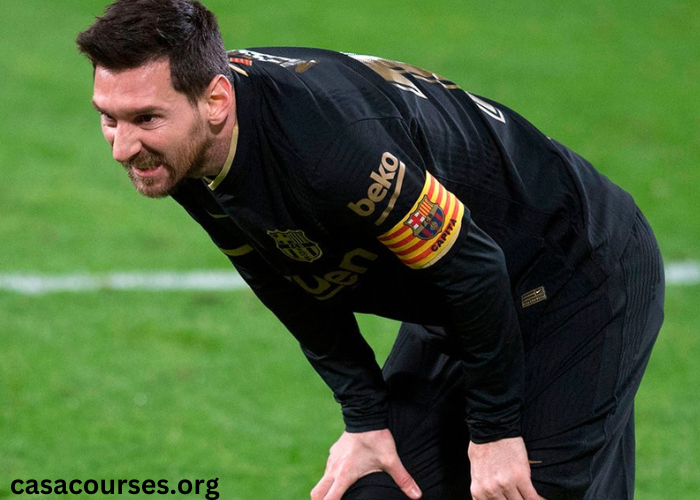In the landscape and sports management arenas, “Turf Turf” is more than a mere repetition of terms; it signifies a comprehensive exploration of turf’s many facets. Turf Turf highlights the broad spectrum of turf applications, from traditional grass lawns to advanced synthetic solutions. This concept underscores the essential role turf plays in various environments, offering benefits that extend beyond aesthetics to include functionality and environmental impact.
Understanding Turf Turf
Turf Turf encompasses all aspects related to turf, integrating various types, uses, and management practices. This term reflects the diverse applications of turf in residential gardens, commercial landscapes, and sports facilities. Turf serves as a critical component in creating visually appealing and functional outdoor spaces, while also addressing environmental and practical concerns.
Natural grass turf has been the traditional choice for lawns and sports fields. Its lush appearance and cooling effect make it a popular option for residential areas. Natural turf can be categorized into cool-season and warm-season grasses, each suited to different climates and soil conditions. Cool-season grasses, such as Kentucky bluegrass and fine fescues, thrive in temperate climates, offering a vibrant green appearance during cooler months. Warm-season grasses, like Bermuda grass and zoysia, are better adapted to hotter climates, providing durability and resistance to drought.
Synthetic turf, often referred to as artificial grass, represents a modern alternative to natural grass. Made from synthetic fibers, synthetic turf mimics the look and feel of natural grass while minimizing maintenance requirements. It is especially beneficial in areas where natural grass struggles to grow or where high traffic demands a more durable surface. Synthetic turf is used extensively in sports fields, playgrounds, and urban landscapes due to its resilience and low upkeep needs.
Hybrid turf systems combine natural grass with synthetic fibers, offering a middle ground between traditional and artificial options. These systems are designed to withstand high traffic and offer a more sustainable solution for sports fields and other heavily used areas. By integrating synthetic elements into natural grass, hybrid systems enhance durability while preserving the natural feel and appearance of turf.
Benefits of Turf Turf
Turf Turf provides a multitude of benefits that enhance both aesthetic appeal and functionality. For residential and commercial landscapes, a well-maintained turf area can significantly boost property value and create inviting outdoor spaces. A lush, green lawn offers a pleasant environment for relaxation and social gatherings, contributing to an overall positive impression of a property.
In the realm of sports and recreation, turf plays a crucial role in ensuring optimal performance and safety. High-quality turf surfaces provide consistent playing conditions, which are essential for athletes’ performance and injury prevention. Whether it’s a football field, golf course, or tennis court, the quality of the turf can influence the outcome of the game and the well-being of players.
From an environmental perspective, turf contributes to ecological balance by reducing soil erosion, improving air quality, and mitigating the urban heat island effect. Natural grass turf acts as a natural filter, capturing airborne pollutants and dust. Its root system helps stabilize the soil, reducing runoff and erosion during heavy rainfall. Moreover, turf can play a role in cooling urban areas, offsetting the heat generated by concrete and asphalt.
Synthetic turf also offers environmental advantages, such as reduced water consumption and the elimination of chemical treatments like pesticides and fertilizers. However, the production and disposal of synthetic turf raise sustainability concerns. Advances in synthetic turf technology are addressing these issues by incorporating recyclable materials and improving manufacturing processes.
Hybrid turf systems provide a balanced approach to sustainability by combining the benefits of natural and synthetic elements. These systems reduce water usage and maintenance requirements while maintaining the natural appearance and functionality of turf.
Installing Turf Turf: Considerations and Techniques
Installing Turf Turf involves several steps, each critical to achieving a successful outcome. For natural grass, site preparation is the first step. This includes removing debris, leveling the soil, and adding soil amendments as necessary. Proper site preparation ensures a healthy growing environment for the grass. Once the site is ready, grass seed or sod can be installed. Seeding requires careful attention to soil conditions and watering to promote germination, while sod offers instant results but needs proper installation and care.
The installation of synthetic turf involves a more complex process. It begins with preparing the sub-base, which includes grading and compacting the soil to create a stable foundation. A layer of crushed stone or gravel is added to facilitate drainage and support. Synthetic turf rolls are then laid out, and seams are joined carefully to ensure a seamless appearance. Infill material, such as rubber granules or sand, is applied to support the turf fibers and provide cushioning. This process requires precision and expertise to ensure a high-quality result.
Both natural and synthetic turf require ongoing maintenance to ensure longevity and performance. Natural grass turf needs regular mowing, watering, and fertilizing. Mowing helps maintain the grass at an optimal height and encourages healthy growth. Adequate watering is essential for keeping the grass green and vibrant, while fertilizing provides necessary nutrients for growth.
Synthetic turf maintenance is generally less intensive but still important. Regular brushing helps keep the turf fibers upright and prevents matting. Debris such as leaves and dirt should be removed periodically to maintain the turf’s appearance and functionality. Additionally, checking and replenishing the infill material helps maintain the cushioning effect and overall performance of the turf.
Turf Turf and Environmental Sustainability
Sustainability is a growing concern in turf management. Natural grass turf offers several environmental benefits, including improved air quality, reduced soil erosion, and support for local wildlife. However, it requires significant water and chemical inputs, which can impact the environment.
Synthetic turf presents a different set of sustainability challenges. While it eliminates the need for water and chemical treatments, its production and disposal can have environmental impacts. Advances in synthetic turf technology are leading to more sustainable options, such as using recycled materials and reducing the carbon footprint of manufacturing processes.
Hybrid turf systems offer a more sustainable solution by combining the benefits of natural and synthetic turf. These systems reduce the need for water and maintenance while providing a durable and aesthetically pleasing surface. By integrating synthetic fibers into natural grass, hybrid systems offer a practical approach to managing high-traffic areas and addressing environmental concerns.
The Future of Turf Turf
The future of Turf Turf is likely to see significant advancements as technology and environmental awareness continue to evolve. Innovations in synthetic turf materials are expected to enhance durability, performance, and sustainability. Advances in manufacturing processes, including the use of recyclable materials, will contribute to reducing the environmental impact of synthetic turf.
Research into turfgrass breeding and genetics aims to develop grass varieties that require less water and maintenance while offering improved performance and resilience. These advancements will play a crucial role in addressing challenges related to climate change and resource conservation.
Furthermore, the integration of smart technology in turf management is on the horizon. Technologies such as precision irrigation systems and remote monitoring tools will enable more efficient and effective management of turf areas. These innovations will help optimize resource use, reduce waste, and improve overall turf performance.
Conclusion
Turf Turf represents a comprehensive exploration of the various aspects of turf, including its types, benefits, and applications. Understanding the different forms of turf—natural grass, synthetic, and hybrid systems—helps in making informed decisions about landscaping, sports field management, and environmental sustainability. As technology and sustainability practices continue to advance, the future of Turf Turf promises to bring innovative solutions that enhance functionality and reduce environmental impact. Whether for residential, commercial, or recreational purposes, appreciating the complexities of Turf Turf can lead to more effective and sustainable choices in creating and maintaining beautiful and functional outdoor spaces.



